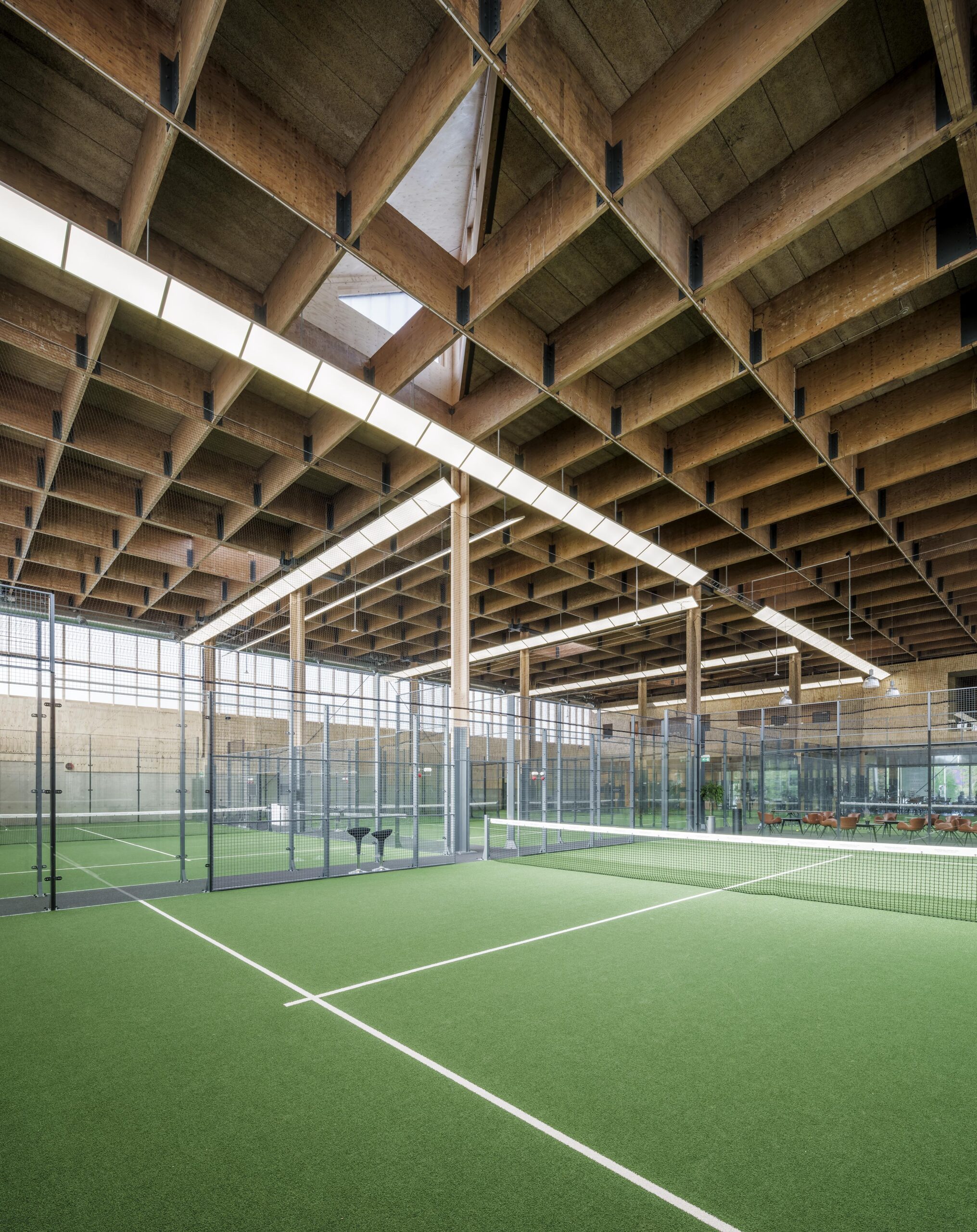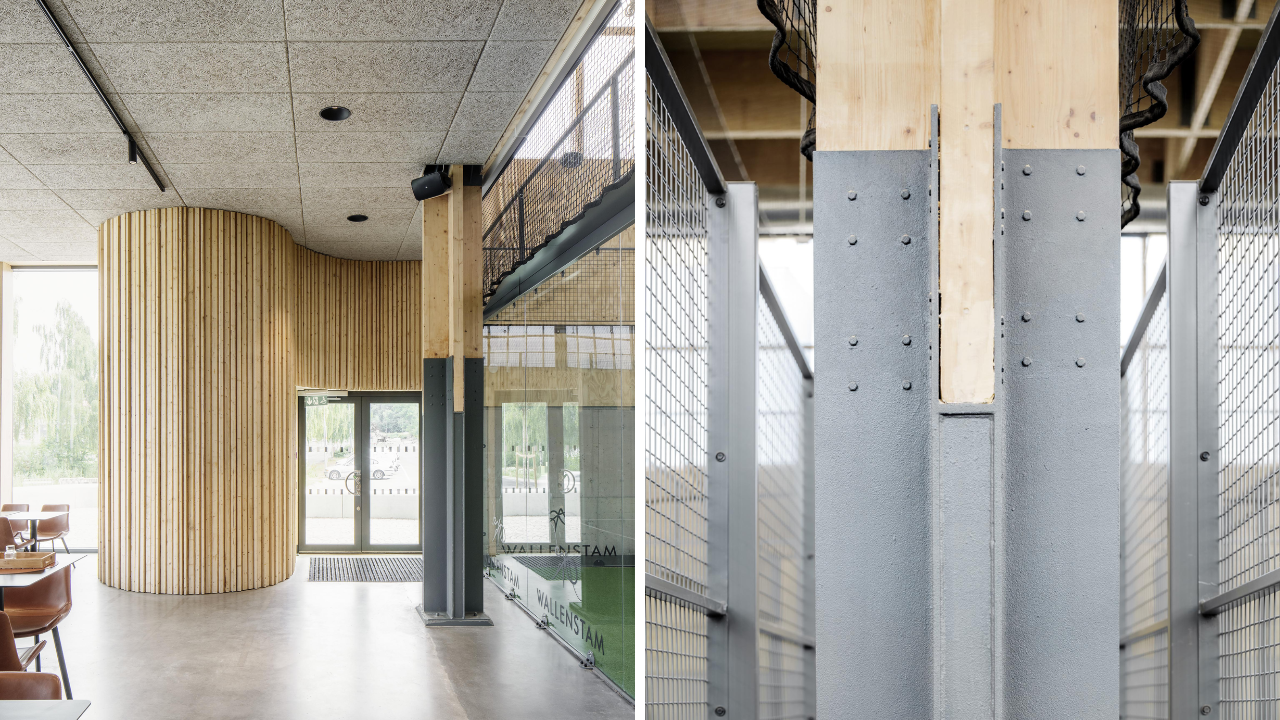Call for entries: The 14th Architizer A+Awards celebrates architecture's new era of craft. Apply for publication online and in print by submitting your projects before the Main Entry Deadline on December 12th!
It’s safe to say that adaptive reuse is no longer a niche concept. Within the architectural community and beyond, the idea of repurposing old buildings has become almost mainstream. Industrial halls turned art galleries, factories transformed into lively co-working spaces — it’s clear we’ve embraced the power of reinvention. And that’s a good thing. It means we’ve reached a point where the industry recognizes the value of preserving resources, reducing waste and creating meaningful continuity in our built environments.
But what about new buildings? As much as we celebrate adaptive reuse, new structures will continue to be built, often with specific, time-sensitive purposes in mind. Temporary buildings, in particular, are usually viewed as wasteful — they are disposable solutions to short-term problems. But, what if we could rethink this entirely?
One recent project challenges how we think about temporary architecture: the Östermalm Temporary Market Hall in Stockholm, which is now the Östermalm Hall Padel in Gothenburg. Remarkably, the project won A+Awards accolades in both of its iterations. Designed to solve an immediate, time-sensitive need, it could have been just another fleeting structure. But what if a temporary building could do more, living beyond its original purpose and transforming into something entirely new?
This project dives into how intentional design turned a short-term solution into something far greater, redefining what “temporary” can mean in architecture.
Origins: A Temporary Market with a Plan

Östermalm’s Temporary Market Hall by Tengbom, Stockholm, Sweden | Jury Winner, Retail, 5th Annual A+Awards
The story of the Östermalm Temporary Market Hall begins with a challenge that many cities face: how to modernize historic buildings while preserving their legacy. In Stockholm, the Östermalm Market Hall, a landmark built in 1888, had served the community for over a century but was in dire need of refurbishment by the 2010s. Its aging infrastructure required extensive updates to meet modern standards while maintaining its architectural character.
This created a pressing question: where would the market traders and their customers go during the renovation? The market was a key part of the local economy and culture and relocating it was essential to keep business going. The answer was a temporary structure designed to house the market on Östermalm Square, the site where outdoor market trading had originally taken place before moving indoors in 1888. This decision created an opportunity to revisit the square’s historical use while accommodating modern needs.
In 2016, the City of Stockholm commissioned Tengbom Architects to design the temporary market. Instead of a basic, utilitarian solution, the architects were tasked with creating a building that could meet the demands of traders and customers while respecting its temporary nature. Crucially, they were asked to ensure that the structure wouldn’t simply be discarded after its use. This commitment to reuse and adaptability defined the project from the outset — it also helped secure an A+Award win for the finished building.
Phase 1: Designing for Change

Östermalm’s Temporary Market Hall by Tengbom, Stockholm, Sweden | Jury Winner, Retail, 5th Annual A+Awards
The Östermalm Temporary Market Hall was designed with adaptability and sustainability at its core, addressing immediate needs while planning for the future. Its modular construction system, using glulam columns, veneer beams and steel brackets, allowed for quick assembly, efficient disassembly and minimal waste. These lightweight yet durable components ensured the structure could be easily relocated or reconfigured for future use.
The choice of materials reinforced this commitment to reuse. Untreated pine battens on the lower facade provided a natural, durable finish. In contrast, translucent polycarbonate panels on the upper facade flooded the interior with soft daylight and created a glowing effect at night. Both materials were selected for their functionality and ability to be repurposed.

Östermalm’s Temporary Market Hall by Tengbom, Stockholm, Sweden | Jury Winner, Retail, 5th Annual A+Awards
Inside, the hall’s layout was designed for flexibility. Wide aisles supported the movement of shoppers between market stalls, while mezzanines housed kitchens and technical installations, keeping the ground floor open for trading. This arrangement not only catered to the demands of a busy market but also ensured the interior could adapt to entirely different uses.
Positioned on Östermalm Square, the hall’s entrances aligned with pedestrian paths, reinforcing its connection to the urban environment and recalling the square’s historic role as a marketplace. Thoughtful design choices, from its modular framework to its recyclable materials, ensured the building’s life wouldn’t end when its role as a temporary market concluded. Instead, it was built with its next chapter in mind — demonstrating how temporary architecture can be both purposeful and enduring.
This brings us to the next phase…
Phase 2 (A Second Life): From Market Hall to Padel Arena
When the Östermalm Market Hall reopened in 2020 after its renovation, the temporary hall had fulfilled its purpose, but its story was far from over. Instead of dismantling the structure and discarding its components, the City of Stockholm made an innovative choice: to sell the building for reuse. This decision not only prevented waste but also demonstrated how intentional design can unlock new possibilities for buildings beyond their original purpose.

Östermalm Hall Padel by Tengbom, Gothenburg, Sweden | Jury Winner, Gyms & Recreation Structures; Jury Winner, Sustainable Adaptive Reuse/Renovation Project, 12th Annual A+Awards
The temporary hall was purchased by property company Wallenstam, which saw its potential for a completely new function—a padel sports facility in Mölnlycke, east of Gothenburg. Over the next year, the building was disassembled, transported and reassembled on its new site, undergoing significant adaptations to meet the requirements of its new role.
Adapting to a New Purpose
Transforming the Östermalm Temporary Market Hall into Östermalmshallen Padel required thoughtful modifications, but the building’s modular design made the process efficient. To accommodate six padel courts, the interior volume was expanded by extending the columns with specially designed “steel socks” and redistributing structural loads using steel transfer beams.

Östermalm Hall Padel by Tengbom, Gothenburg, Sweden | Jury Winner, Gyms & Recreation Structures; Jury Winner, Sustainable Adaptive Reuse/Renovation Project, 12th Annual A+Awards
The façade was updated for permanent use, with pine battens treated with iron vitriol for added durability and thermal insulation installed throughout. Inside, the open layout was adapted for padel courts, with a new mezzanine housing a restaurant, staff areas and multipurpose rooms.
Materials like wood wool tiles and fire-resistant varnish created a practical yet inviting interior, while the reuse of the hall’s multi-wall polycarbonate sheeting maintained its iconic glowing effect. These changes preserved the structure’s architectural essence while meeting the demands of its new role.
Preserving the Hall’s Architectural Identity

Östermalm Hall Padel by Tengbom, Gothenburg, Sweden | Jury Winner, Gyms & Recreation Structures; Jury Winner, Sustainable Adaptive Reuse/Renovation Project, 12th Annual A+Awards
While the Östermalmshallen Padel serves an entirely new purpose, its design carries echoes of its past. The modular steel structure, pine battens and polycarbonate façade maintain the character of the temporary market, demonstrating how adaptive reuse can retain a building’s essence while giving it a fresh identity (this is one of many factors that led to both of the building’s Jury prizes in the 12th Annual A+Awards).
The thoughtful integration of its new function highlights the foresight in the hall’s original design. Elements like the flexible layout and durable materials made the transformation possible, proving that temporary structures don’t have to be wasteful. In fact, they can be a sort of stepping stones that allow for future innovations.
A New Perspective on Temporary Architecture

Östermalm Hall Padel by Tengbom, Gothenburg, Sweden | Jury Winner, Gyms & Recreation Structures; Jury Winner, Sustainable Adaptive Reuse/Renovation Project, 12th Annual A+Awards
This story challenges the way we think about temporary buildings. It shows that with intentionality, structures designed for immediate needs can evolve far beyond their original purpose. Instead of being wasteful or disposable, they can adapt, transform and find new ways to serve communities. The hall’s journey from a market to a sports facility demonstrates how flexibility and foresight in design can unlock possibilities that might otherwise go unrealized.
At its core, this project teaches us about architecture’s potential to respond to change. By planning for the future from the start, it embraced a mindset that values reuse, adaptability and a commitment to reducing waste. It’s not just about solving one problem — it’s about imagining how a building can contribute to its environment long after its first role is complete.
In a world where buildings are often tied to single functions, this approach is a reminder of what architecture can achieve when it’s designed to grow and evolve with time. It invites us to think of temporary structures not necessarily as endings, but as beginnings; opportunities to create something that lasts by being ready to change.
Call for entries: The 14th Architizer A+Awards celebrates architecture's new era of craft. Apply for publication online and in print by submitting your projects before the Main Entry Deadline on December 12th!




